14 Types Of Blue Birds in Michigan (ID Guide With Photos)
Michigan is home to some truly wonderful bird species, especially when it comes to beautiful blue birds. If you’re a nature lover or simply enjoy seeing these feathered friends, this guide will help you explore the different types of bluebirds you can find in the state. From the colorful Blue Jay to the majestic Indigo Bunting, each bird has something unique to offer. This article cover 14 different types of bluebirds in Michigan, highlighting their key characteristics, such as size, weight, diet, and more.
1. Eastern Bluebird (Sialia sialis)
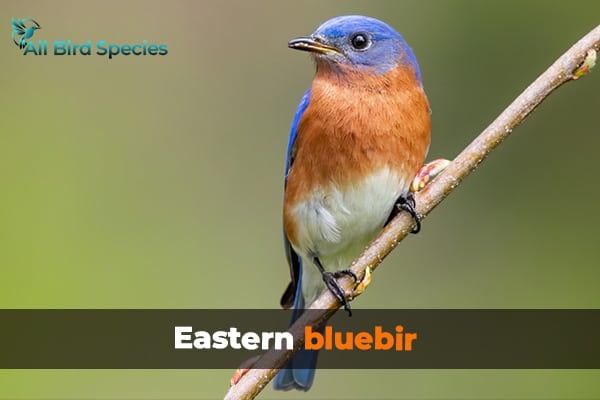
The Eastern Bluebird is one of the most beloved birds in Michigan, known for its bright blue plumage and cheerful song. These birds are often found in open fields, orchards, and backyards, where they nest in tree cavities or birdhouses. The male Eastern Bluebird’s vivid blue feathers and rusty red chest make it a striking sight.
- Size: 6.3-8.3 inches (16-21 cm)
- Weight: 1.0-1.1 ounces (28-32 grams)
- Lifespan: 6-10 years
- Diet: Insects, berries, and fruits
The Eastern Bluebird is quite social, and they thrive in areas with plenty of open space for flying and hunting insects.
2. Blue Jay (Cyanocitta cristata)

The Blue Jay is a highly recognizable bird with its bright blue feathers, crest, and loud calls. These intelligent birds are often seen in woodlands, suburban areas, and at bird feeders throughout Michigan. Blue Jays are known for their clever behaviour and sometimes even mischievous antics!
- Size: 9-12 inches (23-30 cm)
- Weight: 2.5-3.5 ounces (70-100 grams)
- Lifespan: Up to 7 years in the wild
- Diet: Nuts, seeds, insects, and small fruits
Blue Jays are well-known for their curiosity and ability to imitate the calls of other birds, including hawks, which they use to scare off potential threats.
3. Indigo Bunting (Passerina cyanea)
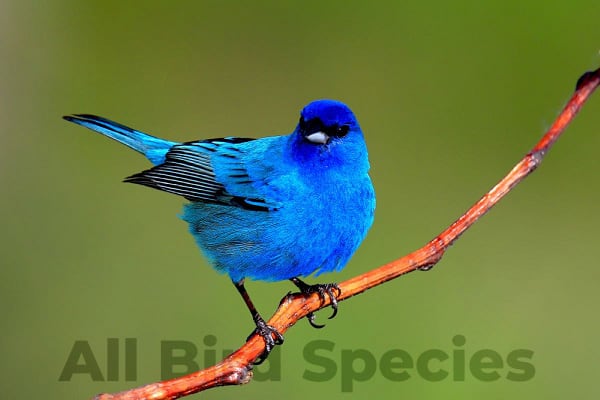
The Indigo Bunting is a small, bright blue bird that loves to sing. During the summer, male Indigo Buntings are easily recognizable thanks to their brilliant blue colour. You’ll often find these birds in Michigan’s brushy fields or forest edges.
- Size: 4.5-5.1 inches (11.5-13 cm)
- Weight: 0.4-0.6 ounces (12-18 grams)
- Lifespan: 3-10 years
- Diet: Seeds, insects, and berries
The male Indigo Bunting’s vibrant blue feathers make it look like a flying gemstone, especially when sunlight hits its plumage.
4. Belted Kingfisher (Megaceryle alcyon)

The Belted Kingfisher is a large, stocky bird with blue-gray plumage and a bushy crest. It is frequently seen near rivers and lakes, diving into the water to catch fish. With their distinctive rattling call, Belted Kingfishers are easy to identify.
- Size: 11-14 inches (28-35 cm)
- Weight: 4-6 ounces (113-170 grams)
- Lifespan: 5-6 years
- Diet: Fish, crustaceans, and insects
This bird’s hunting skills are impressive. It hovers over water before plunging to catch its prey with pinpoint accuracy.
5. Tree Swallow (Tachycineta bicolor)
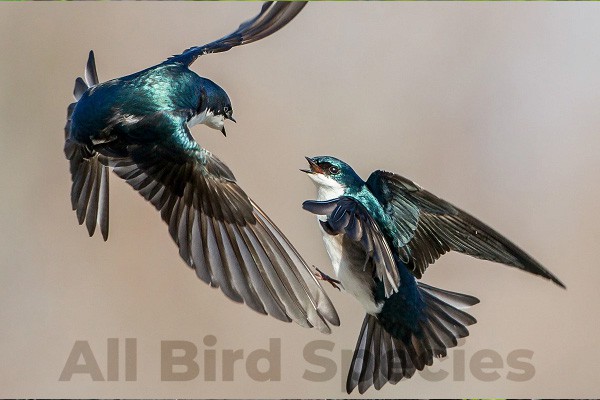
Tree Swallows are sleek birds with iridescent blue-green backs and white underparts. They are often seen swooping and gliding gracefully over fields and ponds. Tree Swallows nest in tree cavities and birdhouses, making them common in both natural and suburban areas of Michigan.
- Size: 4.7-5.9 inches (12-15 cm)
- Weight: 0.6-0.9 ounces (17-25 grams)
- Lifespan: 2-4 years
- Diet: Insects, small berries
Tree Swallows are known for their acrobatic flight and their important role in controlling insect populations.
6. Cerulean Warbler (Setophaga cerulea)
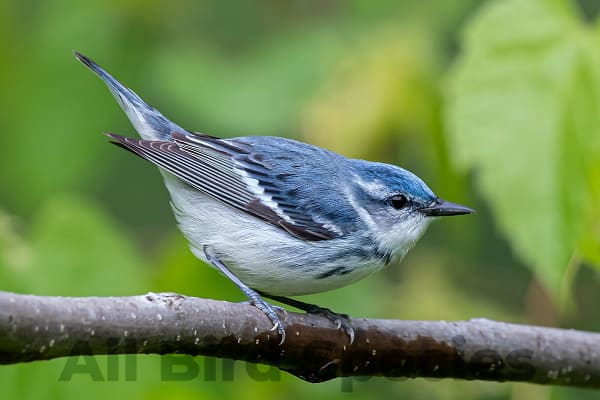
The Cerulean Warbler is a small songbird that can be difficult to spot due to its preference for high treetops. With its sky-blue back and white belly, this bird is a delightful sight for birdwatchers. These warblers prefer mature deciduous forests with plenty of large trees.
- Size: 4.3-4.7 inches (11-12 cm)
- Weight: 0.3-0.4 ounces (9-11 grams)
- Lifespan: Up to 6 years
- Diet: Insects and spiders
The Cerulean Warbler is one of North America’s most rapidly declining species, which makes any sighting of this bird in Michigan even more special.
7. Lazuli Bunting (Passerina amoena)
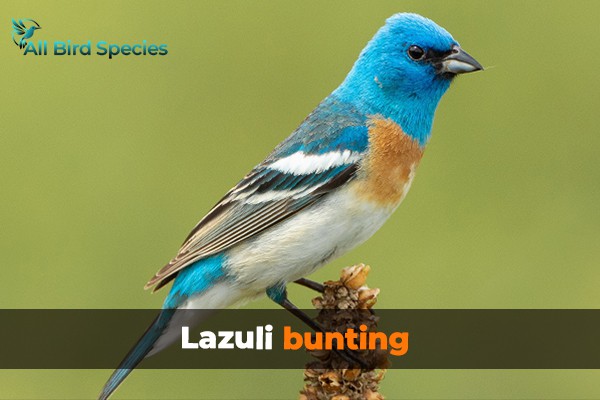
The Lazuli Bunting is a small, brightly colored bird with a mix of blue, orange, and white feathers. This bird is not as commonly seen as some others but can be found in shrubby areas and open woodlands during migration.
- Size: 5.1-5.9 inches (13-15 cm)
- Weight: 0.5-0.6 ounces (14-18 grams)
- Lifespan: 5-7 years
- Diet: Seeds, insects, and berries
The Lazuli Bunting’s colors are as beautiful as its melodic song, and spotting one is a treat for bird enthusiasts in Michigan.
8. Blue-gray Gnatcatcher (Polioptila caerulea)
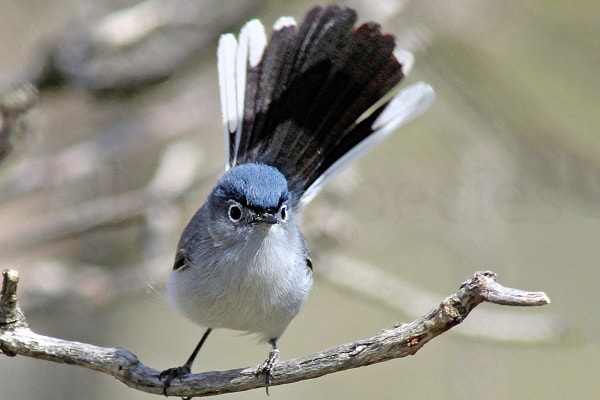
The Blue-gray Gnatcatcher is a tiny bird with soft blue-grey feathers and a long, slender tail. It’s an active bird, always moving as it searches for small insects and spiders among the leaves.
- Size: 3.9-4.3 inches (10-11 cm)
- Weight: 0.2-0.3 ounces (5-8 grams)
- Lifespan: 3-5 years
- Diet: Insects, spiders, and other small invertebrates
With their high-pitched calls and quick movements, these birds are fun to watch as they flit through the trees in search of their next meal.
9. Mountain Bluebird (Sialia currucoides)
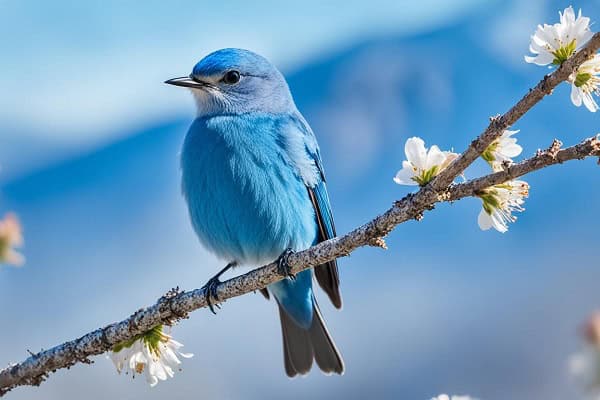
The Mountain Bluebird is a stunning bird that is less common in Michigan but may occasionally be spotted during migration. Males have bright sky-blue plumage, while females have more subdued grayish-blue coloring.
- Size: 6.3-7.9 inches (16-20 cm)
- Weight: 1.1 ounces (30 grams)
- Lifespan: 6-10 years
- Diet: Insects, berries, and small fruits
These birds are known for their beauty and gentle nature, and they are often found in open grasslands and mountainous regions.
10. Barn Swallow (Hirundo rustica)
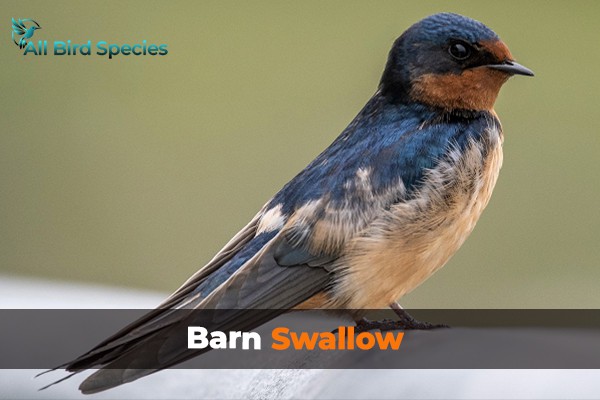
Barn Swallows are known for glossy blue backs, orange underparts, and long forked tails. They are one of the most widespread swallow species, often nesting under eaves, bridges, and barns throughout Michigan.
- Size: 5.9-7.5 inches (15-19 cm)
- Weight: 0.6-0.7 ounces (17-20 grams)
- Lifespan: 4-8 years
- Diet: Flying insects
These graceful birds are excellent fliers, and their acrobatic maneuvers make them a joy to watch as they hunt for insects in mid-air.
11. Steller’s Jay (Cyanocitta stelleri)
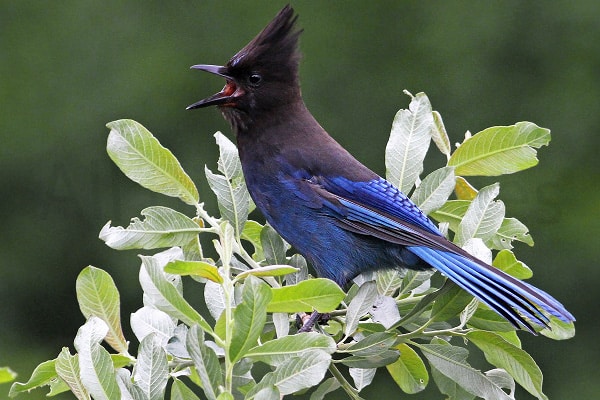
Steller’s Jay is a striking bird with dark blue plumage and a black crest. Although more commonly found in the western United States, it occasionally appears in Michigan, especially during migration.
- Size: 11-13 inches (28-33 cm)
- Weight: 3.5-4.9 ounces (100-140 grams)
- Lifespan: Up to 16 years
- Diet: Nuts, seeds, insects, small animals
The Steller’s Jay is known for its loud, harsh calls and bold personality, often spotted scavenging for food near campsites or bird feeders.
12. Purple Martin (Progne subis)

The Purple Martin is the largest swallow in North America and has glossy blue-black plumage. These birds are known to nest in colonies, often in specially designed birdhouses or gourds provided by humans.
- Size: 7.5-7.9 inches (19-20 cm)
- Weight: 1.6-2.1 ounces (45-60 grams)
- Lifespan: 5-7 years
- Diet: Flying insects
Purple Martins are well-loved for their aerial displays and their help in controlling mosquito populations.
13. Black-throated Blue Warbler (Setophaga caerulescens)
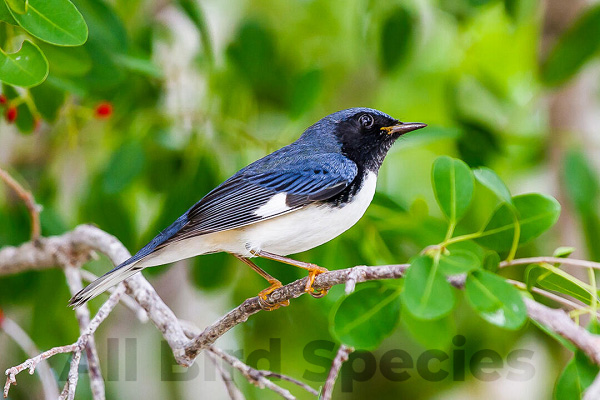
The Black-throated Blue Warbler is a small bird with distinctive black, white, and blue colouring. Males easily identify with their navy-blue backs, black faces, and white underparts. These warblers prefer mature forests with dense undergrowth.
- Size: 5.1 inches (13 cm)
- Weight: 0.3-0.4 ounces (9-11 grams)
- Lifespan: 5-8 years
- Diet: Insects and berries
These birds are often seen during migration, and their unique coloration makes them a favorite among birdwatchers.
14. Red-breasted Nuthatch (Sitta canadensis)

Though not entirely blue, the Red-breasted Nuthatch’s bluish-grey back earns it a spot on this list. These birds often climb up and down tree trunks in search of insects.
- Size: 4.3-4.5 inches (11-11.5 cm)
- Weight: 0.3-0.5 ounces (8-10 grams)
- Lifespan: 2-5 years
- Diet: Insects, seeds, and nuts
The Red-breasted Nuthatch is known for its fearless behaviour, even approaching humans at feeders during the colder months
Conclusion
These 14 blue birds are just a glimpse into the incredible birdlife that can be found in Michigan. Whether you’re an experienced birdwatcher or just beginning, seeing these birds in the wild is a rewarding experience. Keep an eye out for their vibrant feathers, distinctive calls, and fascinating behaviors the next time you explore Michigan’s forests, fields, or backyard.
Read More🐦Related Articles:
- Yellow Birds in Colorado
- Blue Bird With A Red or Orange Chest
- Bird Beak Types
- Birds with Long Beaks
- Hawks in Mississippi
Frequently Asked Questions About Michigan Blue Birds
Q1. What kind of blue birds are in Michigan?
The Eastern Bluebird is a common bluebird in Michigan.
Q2. Do bluebirds stay in Michigan year-round?
No, Eastern Bluebirds migrate south for the winter and return to Michigan in the spring.
Q3. What does a Michigan bluebird look like?
The Eastern Bluebird has a vibrant blue back, reddish-brown chest, and white underparts.
Q4. What kind of bird has blue?
Various birds, including the Eastern Bluebird, Blue Jay, and Tree Swallow, can be blue.







